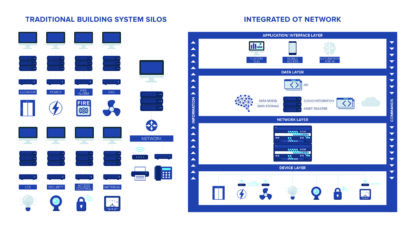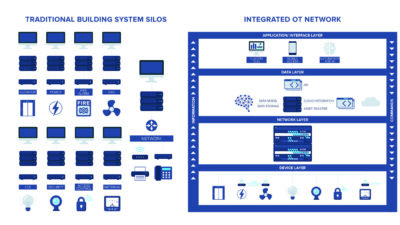Emergency and legally required electrical systems and critical installations require load bank testing of standby power systems during the commissioning process to ensure that the complete systems will operate as designed in the installed location. These test requirements are typically spelled out in electrical engineering specifications for optional loads and can be a requirement of local auth...
Emergency and legally required electrical systems and critical installations require load bank testing of standby power systems during the commissioning process to ensure that the complete systems will operate as designed in the installed location. These test requirements are typically spelled out in electrical engineering specifications for optional loads and can be a requirement of local authorities having jurisdiction for standby power systems that provide power to code-required life safety and legally required standby loads.
The National Fire Protection Assn. (NFPA) Standard 110, which indicates the standards for monthly maintenance and operation of standby generator sets and dictates exercise recommendations for standby generators, says that “generators should be exercised monthly at 30% of the nameplate rating or loaded to the minimum engine exhaust temperature recommended by the engine manufacturer.”
Generator exercising can be programmed into the automatic transfer switch (ATS) to automatically start and run the standby system at predetermined times. If the loads to be served cannot endure a brief outage during transfer and retransfer between sources, a load bank can be used to isolate the generator from the electrical distribution system during testing. Fixed systems can be configured to switch stepped amounts of resistive loads to simulate varying levels of real system load. Extended no-load testing not only can damage the generator’s engine, but also result in wet stacking and carboning. It is important to have a long-term generator testing plan in place at the turn over of a project.
It is possible to have a single generator feed life safety and non-life safety loads. The National Electric Code (NEC) 700.5 B allows an alternate power source to supply emergency, legally required standby and optional loads, where automatic selective load pickup and load shedding are implemented as needed to ensure adequate power to life safety, legally required standby and optional loads, in that order. This can be achieved by providing a separate ATS for each of the three branches of loads: life safety, legally required standby and optional.
Some electrical engineers provide specifications to provide both a resistive and a reactive load bank test in the field. In many systems, I think this form of testing is not necessary; it’s overkill. This is especially true when the manufacturer provides a reactive and resistive load bank test in the factory before shipping the generator to the site. It is important for the engineer or commissioning agent to review the factory test prior to witnessing the field testing.
Resistive load bank are the most common form of load bank testing of generator systems. These load bank systems will provide a test of the rated kW, but will not test the generator system for full kVA at the rated power factor. Testing the generator at the rated kW will test the engine cooling system, the fuel system and the exhaust system.
Most specifications contain text similar to the following:
Generator tests shall include a minimum of 10 starts of engine generator set, minimum of 10 operations of auto transfer switch, 8 hour maintained operation under conditions of randomly applied loads at 10% to 100% of rated capacity. Loading shall be by use of load banks.
Provide certified results of testing, including frequency and voltage regulation at 25%, 50%, 75% and 100% of rated load, fuel consumption and exhaust emissions at the above load ratings, actual measured values for pickup and drop out relays for the ATS, measured values for time delay relays.
In addition to the above text, if the specifications call for a test under rated power factor conditions, a resistive and a reactive load bank will need to be used. The reactive portion of the load bank test will simulate inductive loads typically found in commercial construction.
Generators are typically specified with a kW rating and an associated power factor. Together, these values indicate the maximum kW (real power) and kVA (apparent power) that the generator will produce. Mathematically, power factor (PF) is the ratio between kW and kVA (PF = kW / kVA). It is a measure of how efficiently the current is being converted into useful work. At low power factors, more current will be required to provide the same amount of power.
An electrical engineer must consider both the engine and generator individually and as a system. Engines produce the real power (kW) or horsepower and control frequency. Generators change the mechanical energy into electrical energy (kVA) and must satisfy magnetization current (kVAR) within an electrical system.
Oftentimes, a more critical parameter in sizing a generator is the maximum skVA (starting kVA) and maximum skW (starting kW) allowed. The skVA depends on the maximum allowable voltage drop during starting and will be lower for more sensitive critical loads, or where lower maximum voltage drops are required by code.
It is common for a systems skVA and maximum allowable voltage drop to drive the size of the generator. Motors can draw six times the full-load amps during start up. High efficient motors can draw ten times the full-load current or more. This means that the starting of motors can dramatically affect the skVA required and may exceed the maximum skVA of a generator that would otherwise be large enough to serve the steady state load. This could require an oversized generator based solely on the motor starting requirements. This is why popper generator sizing simulations are critical tools for appropriately sizing generator systems.
In the field, a lower power factor (lower than unity as represented with a purely resistive load bank) will cause more amperes to run through the system. As long as all of the electrical equipment has been sized for the worst case scenario of 0.8 power factor (for most commercial applications, a generator will be rated a 0.8 power factor) and the generator main breaker will not trip at the this power factor.
The National Electrical Code requires the generator to have a disconnecting means. NEC 445.18, “Disconnecting Means Required for Generators,” indicates, “Generator shall be equipped with disconnect by means of which the generator and all protective devices and control apparatus are able to be disconnected entirely from the circuits supplied by the generator…”
In an example of a 1,250 kW generator, the generator main breaker is sized based on the calculation below:
1,250 kW / 0.8 pf —1,562.5 kVA —
1,880 amps @ 480-volt, 3-phase
1,880 amps x 125% — 2,350 amps
The National Electrical Code Section 445.13 indicates that the conductors from the terminals of the generator must be sized a minimum of 115% of the nameplate rating of the generator. The generator main breaker is typically sized at 125% of the maximum rated current. This breaker size will ensure that under no circumstance, other than short circuit, will the main breaker trip. This includes the situation when additional current is running through the system because of low power factor.
In addition, to ensure that the main generator breaker does not trip during an occurrence of high load and low power factor (0.8 power factor), a time current curve of the electrical system can be completed to ensure maximum coordination of the electrical system (See below).
A field current injection test can be provided on the generator main breaker to ensure that the main breaker will not trip at the maximum calculated current (see calculation in “Overcurrent Protective Device Study,” p. 12).
Although the typical generator will be tested in the factory before shipping to the site, actual load bank testing of the generator is critical to ensure that it will properly operate at the installed location. The generator system can be significantly affected by the altitude and ambient temperature. These parameters can be adequately tested with a resistive load bank test only.
I can see the advantage of a field reactive load bank test in addition to a factory reactive load bank test with a paralleled generator system that has syncing, voltage regulation and load pickup and load shed issues. Paralleled generators are typically utilized where the load to be served is larger that what a single generator can serve or in a critical environment where N+1 or greater on the generator capacity is desired for maximum system reliability and uptime. In many of these critical environments, the load bank is permanently installed to give the owner the ability to load bank test the generators on a regular basis. I do not think it is warranted in a single standalone system.
In a paralleled bus system, the load bank can be directly connected to the common paralleling bus. These load banks, depending on their size, can be used to test a single or multiple generators, and they can be integrated with the use of a separately installed breaker ready for quick installation or with a permanently installed load bank.
ASHRAE Guideline 1-1996 defines commissioning as “the process of ensuring that the systems are designed, installed, functionally tested and capable of being operated and maintained to perform in conformity with the design intent…” All systems have to continue to work in harmony to have the ability to provide a life of reliable service. Generator system design, testing and commissioning can be complex. To effectively design, size and commission a generator systems, an engineer needs to understand the effects of different components in the electrical system and different system topologies.
The recommendations provide here are general in nature. It is the responsibility of the electrical engineer providing commissioning services overview to analyze the specific system and determine the appropriate testing and commissioning measures.
Emergency power systems require load bank testing and commissioning ensure that the complete systems will operate as designed.
Overcurrent Protective Device Study
The diagram represents a 2,500-amp breaker feeding several downstream breakers that feed various life safety, legally required standby and optional loads through ATS. The overcurrent protective device study is provided to ensure, to the greatest extent possible, that a fault downstream of the secondary breakers will not trip the generator main breaker. In this manner, only the lower ampacity branch of power will be tripped offline and not the entire generator system. The instantaneous portion of the 2,500-ampbreaker is set for about 18,000 amps. Based on standard generator system impedances, the generator can put out about 12,500 amps during a short circuit event (see calculation). The short time per unit (STPU) is set for about 8,500 amps. The short time per unit trips at about 0.2 seconds (12 cycles). This will give the lower amperage downstream breakers time to trip a fault downstream of them, but will quickly trip a fault between the 2,500-amp generator main breaker and the generator sub breakers. These settings will provide for the maximum amount of selective coordination between the overcurrent protective devices and the most protection of the generator from a short circuit.
As long as the 2,500-amp generator main breaker has an instantaneous breaker setting higher than 12,500 amps—in this case, about 18,000 amps—the system is selectively coordinated.
In addition, the Long Time Per Unit (LTPU) setting is for 2,500 amps. As many high-end electronic breakers have multiple LTPU settings below 1, it is critical to ensure that this setting is correct. With the actual recommended settings, the engineer can ensure that the breaker will not trip when the generator is running at low power factor and drawing maximum current (1,880 amps)
1,250 kW / 0.8 pf = 1,562.5 kVA = 1,880 amps @ 480-volt, 3-phase
1,880 amps * 6.66 (based on actual generator impedance of 15%) = approximately 12,514 amps
Paralleling Gensets and Testing
Standby generators play a key role in electrical distribution systems utilized in critical environments. Standby gensets can serve life-safety loads as well as legally required standby and optional loads as defined in Section 700 of the National Electrical Code. Generators can be paralleled together for redundancy or capacity. In addition, generators can be paralleled together to the utility service in either an open (break before make) or a closed (make before break) transition.
At less than 100% of design load, more than N+1 can be achieved with paralleling gear. For instance, if a total data center load is forecast to be 10 MW and five 2-MW generators are paralleled to achieve the (N) load, six generators would be paralleled together to achieve N+1. If the actual build out and usage of the data center were only 80% of the forecasted peak design load, the total load would be 8 MW. Four 2-MW generators could supply the load, so with six total generators, the system would achieve N+2 redundancy. Independent strings of generator backup systems would not be able to handle an outage of two generators without affecting critical loads even at 80% of design loading.
Depending on the configuration of the electrical distribution system, a paralleled system can achieve the required redundancy utilizing fewer total generators than a system with individual strings of electrical components.
Load bank testing the generators is much simpler. An additional spare breaker can be added to the line up of generator breakers. The generator tie breaker to the utility board can be opened along with opening all the generator breakers except for the breaker feeding the generator to be tested. By closing only the breaker for the generator to be tested, all of the generators can be load bank tested from a single fixed load bank. This is a much simpler procedure than with a system comprised of individual strings of components.
Load bank testing is an important criterion for ensuring proper operation of critical generators. It is typically recommended to exercise the engine monthly with a minimum load of 30% of the standby power rating or loaded to recommended exhaust stack temperatures. Generators tested at no-load or loads less than 30% of standby rating for long periods of time can develop wet stacking or carboning caused by incomplete combustion and incomplete burning of fuel. This potentially leads to generator malfunction and failure.
There are no distributed automatic transfer switches in the electrical distribution system. This reduces the total valuable floor space that is required for the electrical distribution.
The paralleling gear can potentially accept more than one utility feeder for additional utility service redundancy and “uptime”.
The system can utilize closed transition (make before break). During testing and retransferring from the generators to the utility, the closed transition can eliminate the “bang” on the UPS batteries that can reduce the life of the batteries. The engineer must coordinate with the utility prior to adopting a closed transition system. Most utilities are concerned with these systems and will provide much scrutiny over the intended usage and relay protection of the system.
The paralleling gear can employ soft loading transfer. When utilizing closed transition (make before break), the transition period can be programmed to last for several seconds. The frequency of the generators is matched to the utility under synchronization and paralleled operation. When transferring from the utility to generator, the frequency of the generators can be modified slightly during the parallel operation to slowly increase the load to the generators. This will reduce the heavy step loading on the generators during testing mode or a planned utility outage.
The generators can be rotated during usage. The (+1) unit can be rotated, thereby allowing for equal run times between all the generators.
A priority list of most critical to less critical loads can be programmed in to the logic of the paralleling gear. The control logic can be incorporated into downstream automatic transfer switched and/or building automation systems to turn off less critical loads in a situation where more than the redundant generators fail and can not support the entire load. Without this function, and the loss of more than the redundant generator, the entire generator system could go into overload and potentially fail outright.
Paralleling gear can also be utilized to provide additional capacity, by paralleling two smaller generators to meet the load that a larger generator would provide. This system, called “isolated bus,” does not incorporate the utility feeder into the gear. The generator distribution is mated up with the utility power downstream at the ATS.



